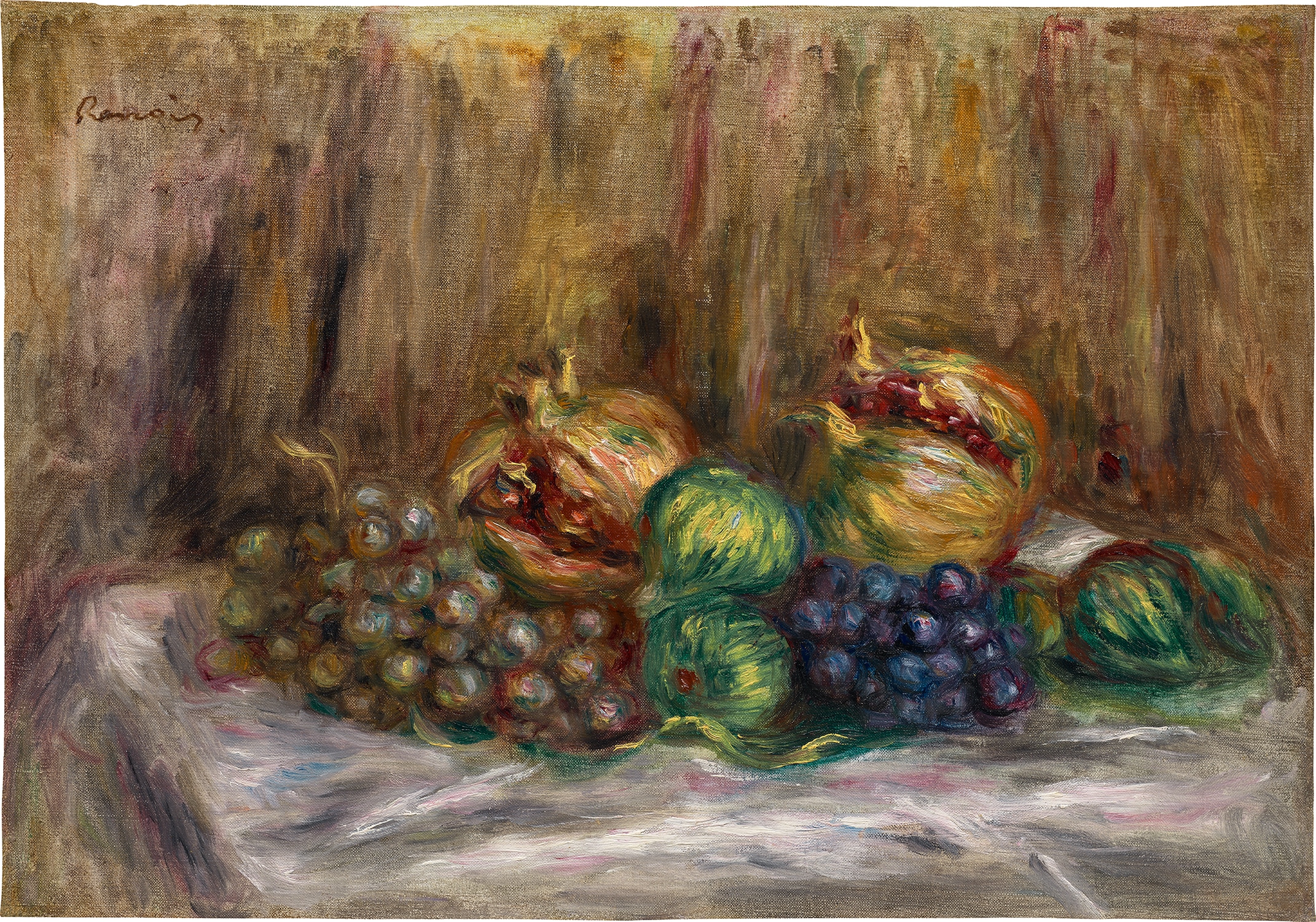

Property from a Distinguished Private Collection
119
Pierre-Auguste Renoir
Nature morte aux raisins, figues et grenades
signed "Renoir" upper left
oil on canvas
13 3/4 x 19 3/4 in. (34.9 x 50.2 cm)
Painted circa 1910.
This work will be included in the forthcoming Renoir Digital Catalogue Raisonné, currently being prepared under the sponsorship of the Wildenstein Plattner Institute, Inc.
This work will be included in the forthcoming Renoir Digital Catalogue Raisonné, currently being prepared under the sponsorship of the Wildenstein Plattner Institute, Inc.